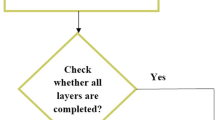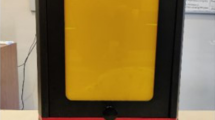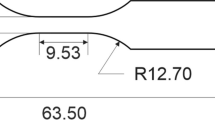Abstract
This study focuses on the impact of different fabrication parameters (build orientation, layer thickness and post-curing time) on the mechanical properties of parts fabricated through projection stereolithography technology. A Titan 2 HR printer (Kudo3D Inc.©) was used to print the specimens. Three different resins have been investigated. Specimens have been organised in 7 families for each material. Besides the different chemical compositions of the resins, the results globally show that the most influential factor on the mechanical properties (ultimate tensile strength, Young’s modulus, elongation at break) is the build orientation. Contrarily, the effect of the post-curing time has proved to be highly dependent on the chemical composition of polymers, playing a significant role only for resins that do not complete the polymerisation process during printing and therefore require a subsequent treatment time. Layer thickness in this application has shown a relevant influence on the mechanical characteristics of the studied resins.





















Similar content being viewed by others
References
Gibson I, Rosen DW, Stucker B (2010) Additive manufacturing technologies 61–63, Springer
Alexander P, Allen S, Duttax D (1998) Part orientation and build cost determination in layered manufacturing. Comput Aided Des 30(5):343–356
Fuh JYH, Lu L, Tan CC, Shen ZX, Chew S (1999) Curing characteristics of acrylic photopolymer used in stereolithography process. Rapid Prototyp J 5(1):27–34
Dulieu-Barton JM, Fulton MC (2000) Mechanical properties of a typical stereolithography resin. Strain 36:2
Melchels FPW, Feijen J, Grijpma DW (2010) A review on stereolithography and its applications in biomedical engineering. Biomaterials 31:6121–6130
Wicker R, Ranade AV, Medina F, Palmer JA (2005) Embedded micro-channel fabrication using line-scan stereolithography. Assem Autom 25(4):316–329
Yang Y, Li L, Zhao J (2019) Mechanical property modeling of photosensitive liquid resin in stereolithography additive manufacturing: bridging degree of cure with tensile strength and hardness. Mater Des 2019(162):418–428
Bertsch A, Bernhard P, Vogt C, Renaud P (2000) Rapid prototyping of small size objects. Rapid Prototyp J 6:259–266
Sun C, Fang N, Wu DM, Zhang X (2005) Projection micro-stereolithography using digital micro-mirror dynamic mask. Sensors Actuators A 121:113–120
Mahdi Emami M, Barazandeh F, Yaghmaie F (2014) Scanning-projection based stereolithography: method and structure. Sensors Actuat A Phys 218:116–124
Dizon JRC, Espera AH, Chen Q, Advincul RC (2018) Mechanical characterization of 3D-printed polymers. Additive Manuf 20:44–67
Quintana R, Choi J-W, Puebla K, Wicker R (2010) Effects of build orientation on tensile strength for stereolithography-manufactured ASTM D-63 type I specimens. Int J Adv Manuf Technol 46:201–215
Domínguez-Rodríguez G, Ku-Herrera JJ, Hernández-Pérez A (2018) An assessment of the effect of printing orientation, density, and filler pattern on the compressive performance of 3D printed ABS structures by fuse deposition, Int J Adv Manuf Technol, 95, 5–8
Rohde S, Cantrell J, Jerez A, Kroese C, Damiani D, Gurnani R, DiSandro L, Anton J, Young A, Steinbach D, Ifju P (2018) Experimental characterization of the shear properties of 3D–printed ABS and polycarbonate parts. Exp Mech 58(6):871–884
Abid S, Messadi R, Hassine T, Ben Daly H, Soulestin J, Lacrampe MF (2019) Optimization of mechanical properties of printed acrylonitrile butadiene styrene using RSM design. Int J Adv Manuf Technol 100 (5-8):1363–1372
Jiang J, Lou J, Hu G (2019) Effect of support on printed properties in fused deposition modelling processes. Virt Phys Prototyp 14(4):308–315
Chockalingam K, Jawahar N, Chandrasekhar U (2006) Influence of layer thickness on mechanical properties in stereolithography. Rapid Prototyp J 12(2):106–113
Rankouhi B, Javadpour S, Delfanian F, Letcher T (2016) Failure analysis and mechanical characterization of 3D printed ABS with respect to layer thickness and orientation. J Fail Anal Prev 16(3):467–481
Chantarapanich N, Puttawibul P, Sitthiseripratip K, Sucharitpwatskul S, Chantaweroad S (2013) Study of the mechanical properties of photo-cured epoxy resin fabricated by stereolithography process. Songklanakarin J Sci Technol 35:91–98
Hague R (2004) Materials analysis of stereolithography resins for use in rapid manufacturing. J Mater Sci 39 (7):2457–2464
Jiang J, Stringer J, Xu X, Zhong RY (2018) Investigation of printable threshold overhang angle in extrusion-based additive manufacturing for reducing support waste. Int J Comput Integr Manuf 31(10):961–969
Jiang J, Xu X, Stringer J (2019) Optimization of process planning for reducing material waste in extrusion based additive manufacturing, vol 59
Material Safety Data Sheet - S-PRO
Material Safety Data Sheet - X-GREEN
Material Safety Data Sheet - ABS
Jerabeka M, Major Z, Lang RW (2010) Strain determination of polymeric materials using digital image correlation. Polym Test 29:407–416
Roylance D (2001) Stress-Strain curves, Massachusetts Institute of Technology, Department of Materials Science and Engineering
Chattopadhyay DK, Sankar Panda S, Raju KVSN (2005) Thermal and mechanical properties of epoxy acrylate/methacrylates UV cured coatings. Progress Org Coat 54(1):10–19
Funding
The authors gratefully acknowledge ERASMUS + 2017-18 program for funding this project (Grant Agreement No. 2017-1-IT02-KA103-035320 - I NAPLES01).
Author information
Authors and Affiliations
Corresponding author
Additional information
Publisher’s note
Springer Nature remains neutral with regard to jurisdictional claims in published maps and institutional affiliations.
Appendix
Appendix
Rights and permissions
About this article
Cite this article
Ambrosio, D., Gabrion, X., Malécot, P. et al. Influence of manufacturing parameters on the mechanical properties of projection stereolithography–manufactured specimens. Int J Adv Manuf Technol 106, 265–277 (2020). https://doi.org/10.1007/s00170-019-04415-5
Received:
Accepted:
Published:
Issue Date:
DOI: https://doi.org/10.1007/s00170-019-04415-5




